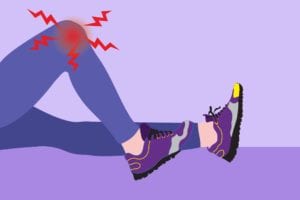

For most people, pain is one of the first clues that they might have osteoarthritis (OA), a degenerative condition in which the cartilage that cushions the joints becomes worn down over time.
But it turns out that OA pain isn’t only a symptom; it might also be a cause of future joint damage.
According to a new study, published in the journal Arthritis Research and Therapy, OA patients with worse knee pain were more likely to have greater physical deterioration of the joint in the next four years compared to those who started out with less pain. This suggests that the pain itself might be contributing to changes in the knee joint.
While that might sound strange, it’s actually quite reasonable. Pain isn’t just an emotion you perceive; there are chemical signals involved that cause inflammation in your body. People who are uncomfortable are also less likely to be active, and “reduced mobility can adversely affect the joint structures,” the authors note.
The researchers followed more than 2,000 participants in the Osteoarthritis Initiative. They assessed their knee pain at baseline and also measured cartilage volume with MRIs. They later compared the initial results with those of tests done at follow-ups.
“This study suggests that controlling knee pain early in the disease course as well as over time by targeting the underlying mechanisms may be important for preserving knee structure and reducing the burden of knee OA,” the authors say.
If you have OA and are uncomfortable, talk to your doctor. Getting your pain under control as soon as possible will certainly help you feel better now — and it might also translate to having less pain and fewer mobility problems in the years to come.





